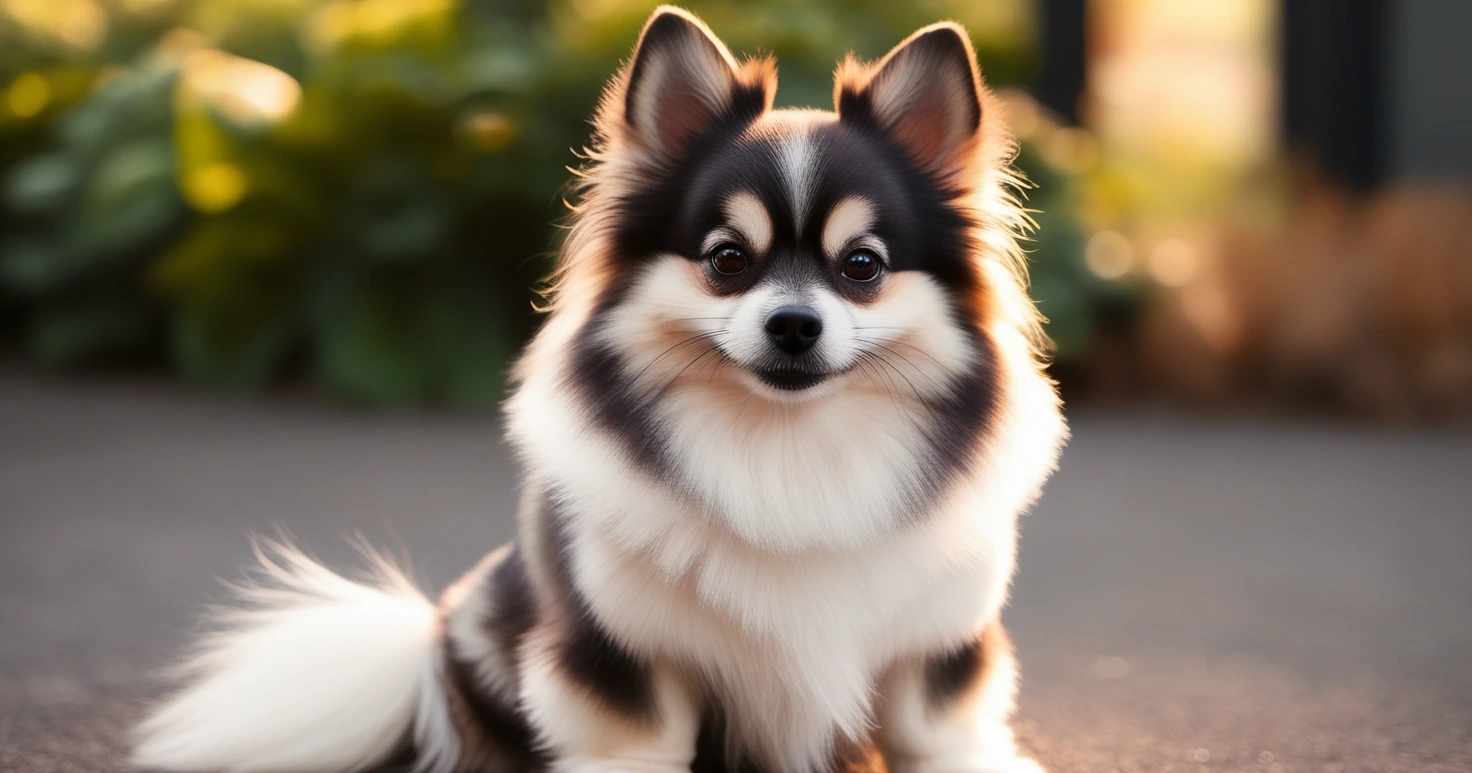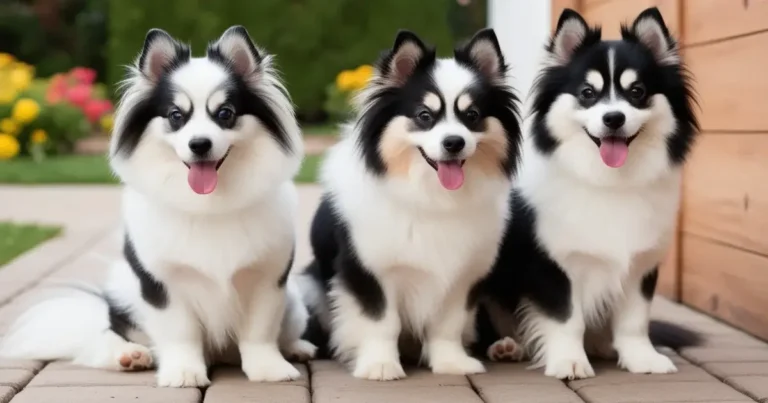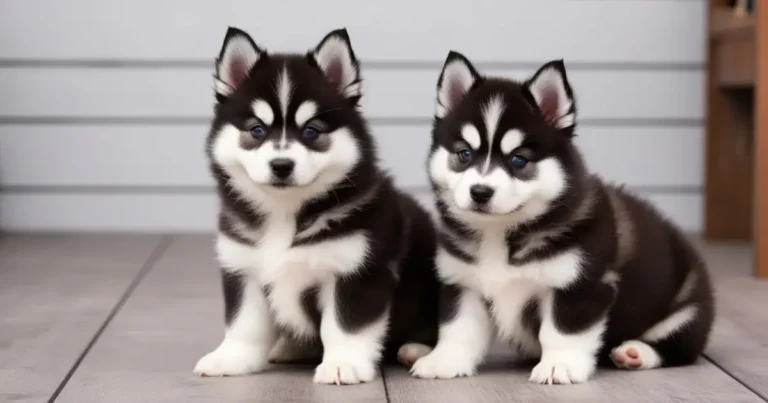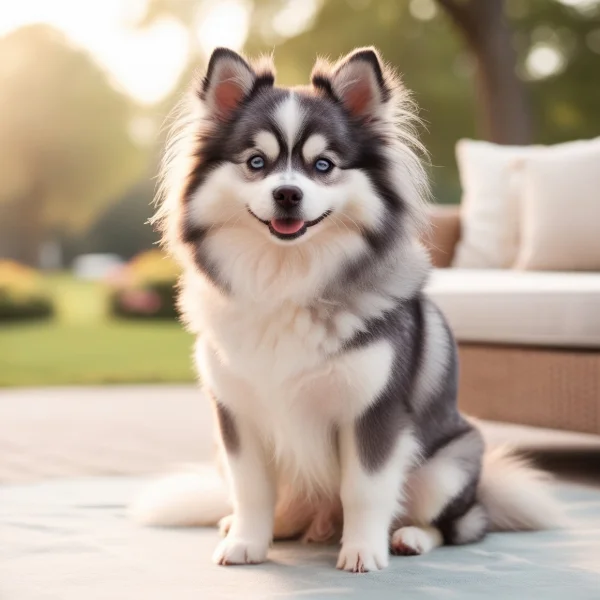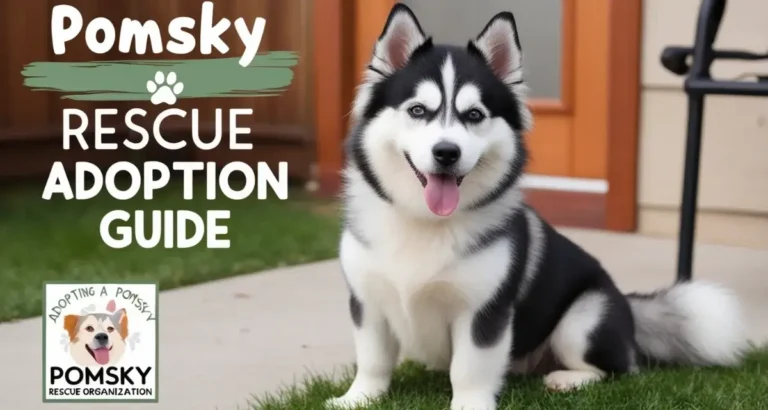What Is a Pomsky Dog? Complete Guide for Potential Owners
Pomskies are among the most popular designer dog breeds today. With their cute looks and playful personalities, many people fall in love with them. But what is a Pomsky dog exactly?
This guide answers all your questions about the Pomsky dog breed, including their history, physical traits, temperament, and care needs.
Table of Contents
History of the Pomsky
The Pomsky dog breed is a cross between a Siberian Husky and a Pomeranian. Breeders often use artificial insemination due to the size difference between these two breeds. This method helps ensure a safe breeding process.
Key points about their history:
- The first Pomsky litter was born in the early 2010s.
- Since then, their cute appearance and playful nature have made them increasingly popular.
Pomsky Appearance and Physical Traits
Pomskies are small but full of charm. They usually stand about 10 to 15 inches tall and weigh around 20 to 30 pounds. Their coats are thick and fluffy, resembling that of their Husky parent. You will find them in a variety of colors, including brown, gray, black, and white. Some Pomskies have bi-colored eyes or striking blue eyes, which only adds to their appeal.
One important note is their shedding tendency. Due to their thick double coat, they shed heavily, especially during seasonal changes. Daily brushing is necessary to keep their fur in good shape and manage shedding.
Pomsky Temperament
Pomskies are playful, intelligent, and very loyal. They love attention and being part of the family. Early socialization is important for Pomskies, especially if they will be around children or other pets. They inherit a prey drive from their Husky side, meaning they might chase smaller animals if not trained properly.
Key temperament traits:
- Playful and loving
- Can be mischievous and vocal
- Enjoy being part of family activities
Pomsky Exercise and Living Needs
Despite their small size, Pomskies have moderate to high energy levels. Daily walks and playtime are essential for keeping them happy and healthy. They adapt well to apartment living if they receive enough exercise and mental stimulation.
However, Pomskies are prone to separation anxiety, so they do best in homes where someone can be with them for a good portion of the day.
Suggested activities to keep your Pomsky engaged:
- Interactive toys
- Puzzle games
- Outdoor play
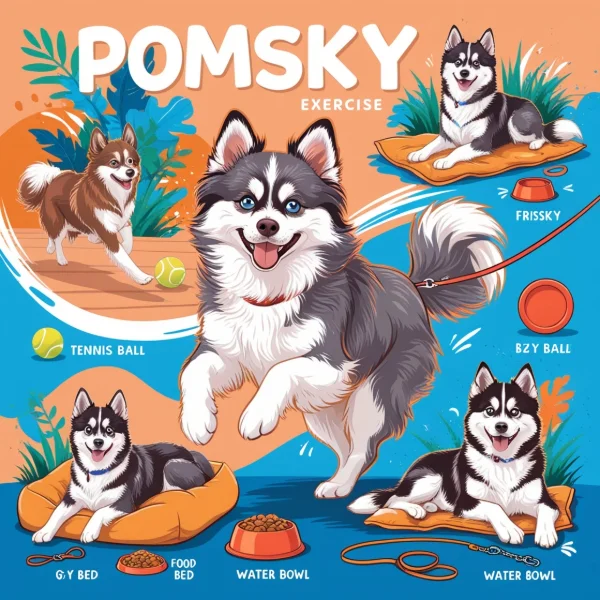
Keeping them physically and mentally active is crucial to preventing boredom, which can lead to mischievous behavior.
Training a Pomsky
Training a Pomsky can be both fun and challenging. They are intelligent dogs, but their Husky lineage may bring some stubbornness to the training process. Starting with short, engaging training sessions works best.
Tips for successful training:
- Use positive reinforcement techniques, such as treats and praise.
- Be consistent and patient.
- Start early to prevent bad habits from developing.
With the right approach, Pomskies can learn to be well-behaved and obedient companions.
Health Concerns
Like all dog breeds, Pomskies are prone to certain health issues. Common problems include hip dysplasia, eye conditions, and dental issues. Regular vet visits and health checkups are crucial to keeping your Pomsky in top condition.
Tips for maintaining Pomsky health:
- Keep an eye out for signs of health problems.
- Maintain a proper diet and ensure regular exercise.
- Groom regularly to promote overall health.
By catching potential issues early, you can ensure that your Pomsky stays healthy and happy throughout its life.
Grooming Requirements
Pomskies require regular grooming due to their thick, double-layered coat. Daily brushing is ideal to reduce shedding and prevent matting. They shed more during warmer months, requiring extra grooming care then.
Grooming tasks to keep in mind:
- Regular brushing
- Maintaining dental hygiene
- Trimming nails
Keeping up with their grooming routine ensures they look their best and stay comfortable.

Nutrition and Feeding
Feeding a Pomsky requires attention to their size and energy needs. A balanced diet is crucial to keep them healthy and active. Be careful not to overfeed, as Pomskies can easily gain weight if they eat too much.
Feeding guidelines:
- Choose high-quality dog food designed for small to medium breeds.
- Monitor portion sizes to avoid weight gain.
This approach ensures they get the nutrients they need.
Adopting or Purchasing a Pomsky
If you are interested in getting a Pomsky, it is important to adopt from reputable breeders or consider adoption from shelters. Some breeders promote unethical practices, such as selling “teacup Pomskies,” which are smaller than usual but often suffer from health problems.
Points to consider when adopting:
- Always do your research to avoid supporting irresponsible breeding.
- Adopting from a shelter is a great option to find a Pomsky in need of a loving home.
Conclusion
Pomskies are wonderful dogs that bring joy, energy, and love into any home. With their playful temperament, striking appearance, and loyal nature, they make excellent companions for the right owner. However, before bringing a Pomsky into your life, it is essential to consider their care needs, temperament, and whether they fit your lifestyle.
FAQs
What kind of dog is a Pomsky in terms of temperament?
Pomsky is a playful and energetic dog. They thrive on attention and love being part of family activities. Their loyalty and intelligence can make them excellent companions, but they require early socialization and training.
What is a Pomsky dog’s grooming needs?
Pomskies require regular grooming due to their thick double coat. Daily brushing helps manage shedding and prevents matting. It's essential to keep up with their grooming routine, especially during seasonal shedding periods.
What health issues should I be aware of with a Pomsky dog?
Like any breed, Pomsky dogs can face health concerns, including hip dysplasia, eye problems, and dental issues. Regular vet check-ups and a healthy lifestyle can help mitigate these risks and ensure their well-being.
What is a Pomsky dog's exercise requirement?
Pomsky dogs have moderate to high energy levels and need daily exercise. Regular walks, playtime, and mental stimulation are vital for keeping them happy and healthy, especially in apartment settings.
